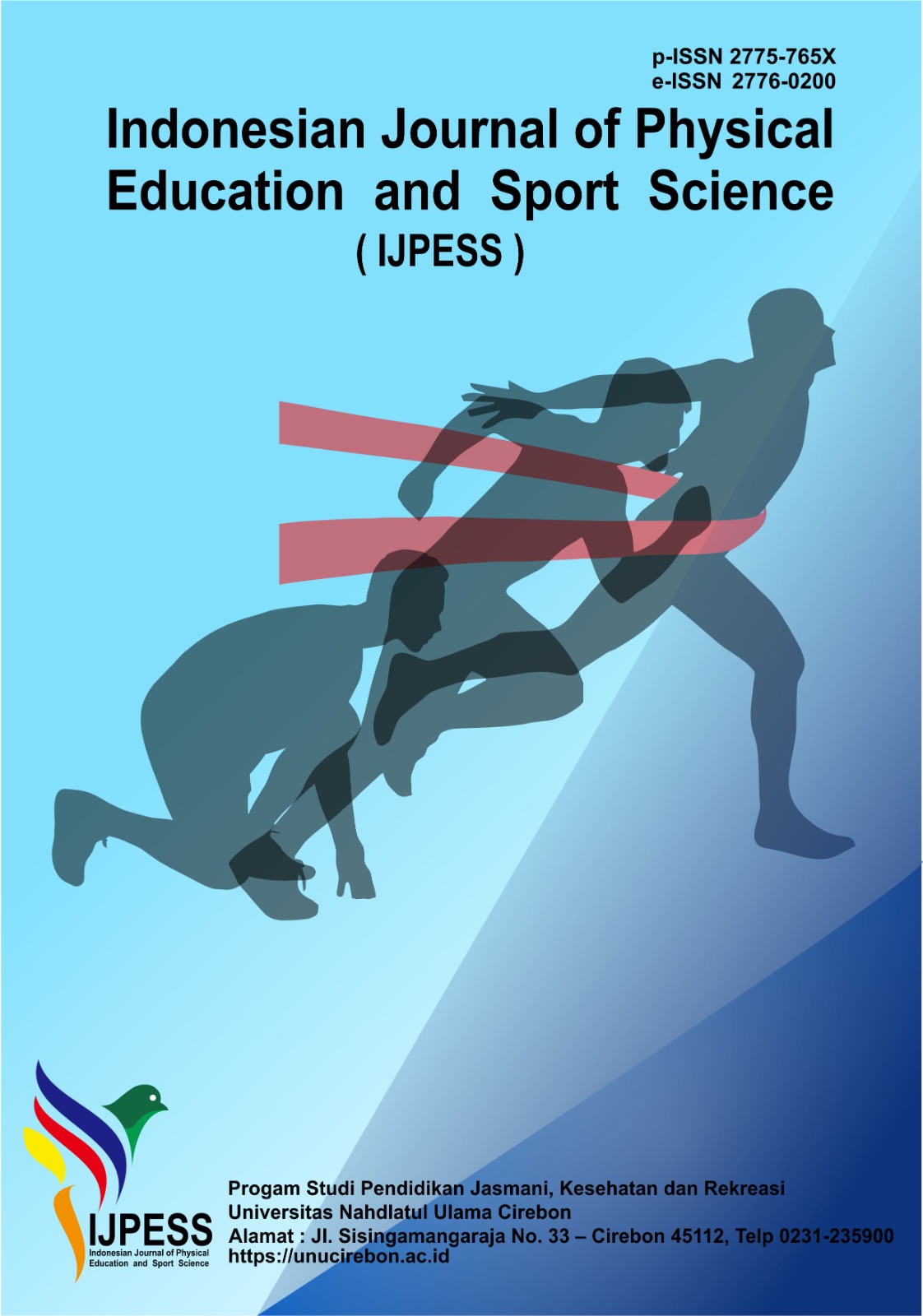Anxiety of Pencak Silat Athletes: A Comparative Study between Sparring and Art Athletes at the Training to Compete Stage of LTAD
DOI:
https://doi.org/10.52188/ijpess.v5i2.1209Keywords:
Pencak Silat Athletes, Anxiety, Long-Term Athlete Development (LTAD)Abstract
Studi purpose. Teenage pencak silat athletes with an age range of 16-18 years have begun to experience anxiety when competing, the high level of anxiety of pencak silat athletes makes athletes not confident in their matches, the phenomenon that often occurs in the field is that sparring athletes often lose focus when facing their opponents and art athletes are difficult to demonstrate to forget movements when performing their movements, therefore it is necessary to examine the level of anxiety between the two categories, this study aims to compare the level of anxiety between sparring and art athletes at the training to compete stage in LTAD.
Materials and methods. This study used a quantitative comparative method with 30 pencak silat athletes divided into sparring and art groups, selected through purposive sampling. Data were collected using the SCAT (Sport Competition Anxiety Test) questionnaire and analyzed with an independent samples t-test in SPSS version 24.
Results. The results showed that there were significant differences in anxiety between sparring athletes and martial arts athletes. Data analysis shows that the anxiety of sparring category athletes tends to be higher than that of martial arts category athletes.
Conclusions. This study concludes that there are significant differences in anxiety levels between sparring and art pencak silat athletes at the training to compete stage in LTAD, with sparring athletes showing higher anxiety. The main factors causing high anxiety in sparring athletes are the competitive nature of the match and direct physical contact with opponents, as well as the lack of competition experience. In addition, psychological aspects such as lack of mental training and social support also affect athletes' anxiety levels.
Published
How to Cite
Issue
Section
Copyright (c) 2025 Faris Rizqullah, Komarudin Komarudin, Mochamad Yamin Saputra, Geraldi Novian

This work is licensed under a Creative Commons Attribution-NonCommercial-ShareAlike 4.0 International License.











